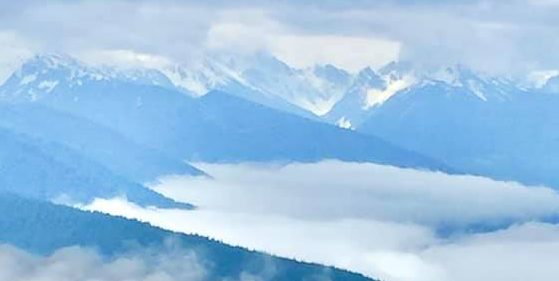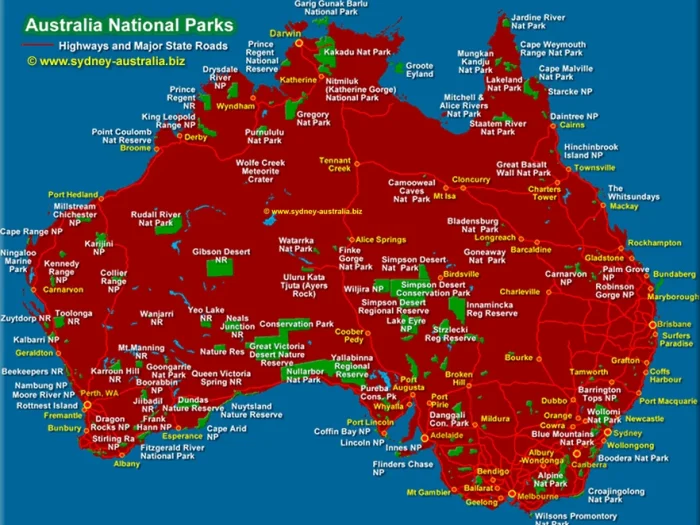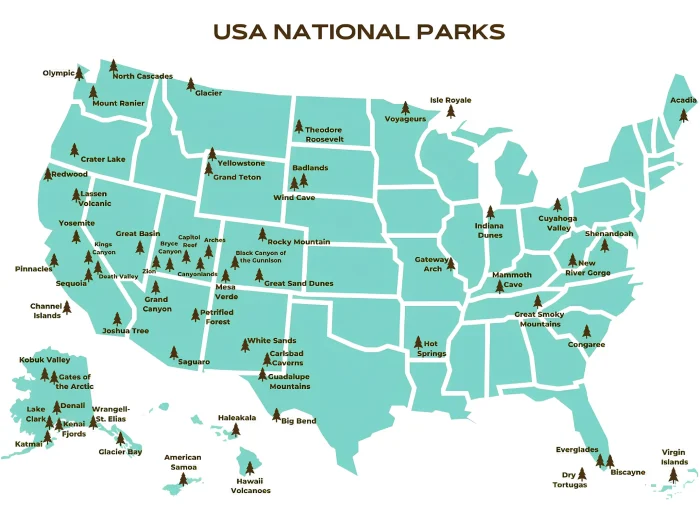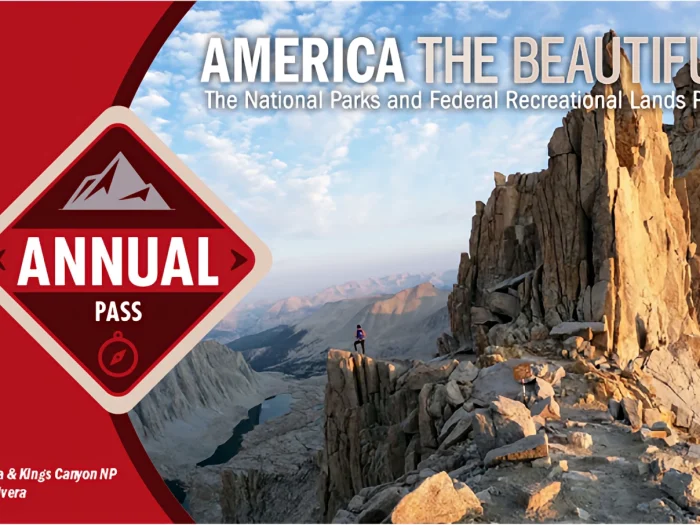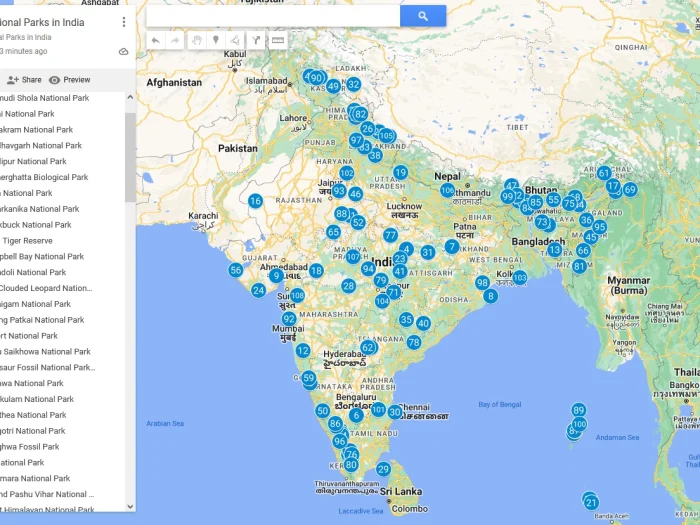List of National Parks in North Dakota
North Dakota has one national park: Theodore Roosevelt National Park, which is divided into three units (South, North, and Elkhorn Ranch) and features rugged badlands, bison, and wild horses. North Dakota also has two other sites managed by the National Park Service (NPS): Knife River Indian Villages National Historic Site and Fort Union Trading Post National Historic Site.
List of National Parks in North Dakota

1. Theodore Roosevelt National Park
Theodore Roosevelt National Park, located in western North Dakota, honors the legacy of Theodore Roosevelt, the 26th President of the United States, who was profoundly influenced by his time spent in the North Dakota Badlands. The park is divided into three units: the South Unit, the North Unit, and the Elkhorn Ranch Unit, which includes Roosevelt’s Elkhorn Ranch site. The park offers dramatic landscapes, including rugged badlands, prairies, and the Little Missouri River. Visitors can enjoy wildlife viewing, hiking, camping, and scenic drives. The park’s visitor centers provide exhibits on Roosevelt’s life, his conservation efforts, and the natural history of the region.
Contact Details
- Address: 315 2nd Avenue, Medora, ND 58645
- Website: Theodore Roosevelt National Park
- Phone: +1 701-623-4466
2. Fort Union Trading Post National Historic Site
Fort Union Trading Post National Historic Site, located on the North Dakota-Montana border, preserves the reconstructed remains of one of the most important fur trading posts on the Upper Missouri River. Operated by the American Fur Company from 1828 to 1867, Fort Union was a bustling center of commerce and cultural exchange between European-American traders and various Native American tribes, including the Assiniboine, Crow, and Blackfeet. Visitors can explore the reconstructed fort, participate in living history programs, and learn about the fur trade’s impact on American history and Native American cultures.
Contact Details
- Address: 15550 Highway 1804, Williston, ND 58801
- Website: Fort Union Trading Post National Historic Site
- Phone: +1 701-572-9083
3. Knife River Indian Villages National Historic Site
Knife River Indian Villages National Historic Site, located near Stanton, North Dakota, preserves the historic and archeological remnants of the Northern Plains Indians, particularly the Hidatsa people. The site features the remains of three Hidatsa villages that were inhabited from the late 18th century to the mid-19th century. Visitors can explore the earthlodge reconstructions, hike the scenic trails along the Knife River, and visit the museum and visitor center to learn about the Hidatsa culture, agriculture, and trade practices. The site provides valuable insights into the daily lives and cultural heritage of the Plains Indians.
Contact Details
- Address: 564 County Road 37, Stanton, ND 58571
- Website: Knife River Indian Villages National Historic Site
- Phone: +1 701-745-3300
List of National Parks in North Dakota
Now you can answer the question: “how many national parks are in North Dakota?” It’s one national parks
Frequently asked questions
Theodore Roosevelt National Park (Medora, ND)
- Where is Theodore Roosevelt National Park located?
It’s in western North Dakota, near the town of Medora. - How many units does the park have?
Three: the South Unit, North Unit, and Elkhorn Ranch Unit. - What is the park famous for?
Its rugged badlands scenery, bison herds, wild horses, elk, and prairie dog towns. - Can you see wildlife easily in the park?
Yes! Bison, wild horses, pronghorn, elk, deer, and prairie dogs are commonly seen. - Is Theodore Roosevelt National Park open year-round?
Yes, it’s open all year, but services and facilities are limited in winter. - What outdoor activities can visitors do?
Hiking, camping, scenic drives, wildlife watching, photography, and horseback riding. - Is there a scenic drive in the park?
Yes, the 36-mile Scenic Loop Drive in the South Unit offers spectacular views and overlooks. - Do I need to pay an entrance fee?
Yes, entrance fees apply (around $30 per vehicle for 7 days). - Can I camp in the park?
Yes, there are campgrounds in both the South and North Units, plus backcountry camping with permits. - Why is the park named after Theodore Roosevelt?
Roosevelt ranched here in the 1880s, and his experiences in the badlands deeply influenced his conservation policies as U.S. President.
🪶 Knife River Indian Villages National Historic Site (near Stanton, ND)
- What is Knife River Indian Villages National Historic Site?
It preserves the remains of earthlodge villages once inhabited by the Hidatsa people. - What can visitors see there?
Reconstructed earthlodges, archeological remains, museum exhibits, and walking trails. - Is there a visitor center?
Yes, it includes exhibits, a film, and a reconstructed earthlodge. - What tribe lived in the area?
The Hidatsa people, along with Mandan and Arikara neighbors. - Is there a connection to Lewis and Clark?
Yes, Lewis and Clark met Sakakawea (Sacagawea) here during their expedition in 1804–1806.
⚒️ Fort Union Trading Post National Historic Site (near Williston, ND)
- What was Fort Union Trading Post?
A major 19th-century fur trading post where Plains tribes traded buffalo robes for goods from Euro-American traders. - Is the fort original or reconstructed?
It’s a reconstruction built on the original site using historical records and archeological evidence. - Which Native American tribes traded at Fort Union?
The Assiniboine, Crow, Blackfeet, Cree, Hidatsa, and other Plains tribes. - Can visitors tour the fort?
Yes, the reconstructed fort, Bourgeois House (museum), and grounds are open to visitors. - Is Fort Union Trading Post on the state border?
Yes, it sits on the North Dakota–Montana border, along the Missouri River.
Read more:
- List of National Parks in New York
- List of National Parks in Hawaii
- List of National Parks in California
